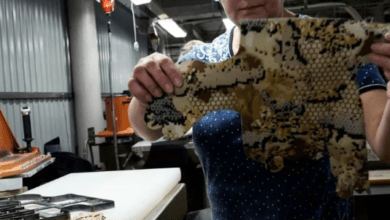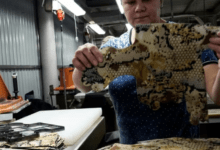The Filmmaking Process: A Beginner’s Guide to Turning Your Vision into a Movie”

Creating a film can be a Filmmaking Process complex journey, and the true scope of what’s involved often becomes clear only once you dive into the process. Whether you’re an aspiring filmmaker or just curious about how movies are made, here’s a simplified guide to the filmmaking process—a beginner’s roadmap to turning your vision into reality.
READ: Kristin Cavallari Spills the Tea on Her Hottest Hookup – Prepare for a Surprise!
Table of Contents
The Filmmaking Process: 7 Essential Steps
Making a film involves multiple stages, each crucial to bringing your story to life. Here’s a basic rundown of the key steps:
Step 1: The Idea
Every film starts with an idea. This initial concept forms the foundation for your entire project, shaping the plot, characters, and conflict. Although the story may evolve, your starting idea is crucial.
Tip: Inspiration can strike at any moment, so keep a way to jot down ideas—whether on your phone, in a notebook, or by collecting relevant articles and snippets. These might not seem significant now, but they could become valuable later.
Step 2: The Script
The script is where you detail your story, setting, and dialogue in a structured format. It serves as a blueprint for your film and a reference for everyone involved.
Tip: Be open to revising the script even after you think it’s finished. Fresh ideas often emerge during production, and allowing room for improvisation can enhance the script. Letting actors improvise can also bring new dimensions to their characters, especially if dialogue isn’t your strong suit.
Step 3: The Storyboards
Storyboards are visual representations of your planned shots, helping you visualize scenes and plan camera angles. They are invaluable for communicating your vision to the team and identifying practical challenges.
Tip: If drawing isn’t your strength, photograph a set with actors in position to create your storyboard. This method not only helps you visualize the scenes but also shows you what’s feasible without needing to alter your set.
Step 4: The Cast and Crew
Finding the right cast and crew is essential. Take the time to evaluate their previous work and experience. Hold auditions to ensure you select the best actors for your roles.
Tip: Choose the most suitable people for your project rather than feeling pressured to include friends or family. Professionalism is key, and it’s important to select individuals who fit the roles and tasks required.
Step 5: The Locations
Location scouting is critical for finding the right settings for your film. Use a camera to document potential sites, ensuring they meet the needs of your scenes and provide adequate space for the cast and crew.
Tip: Always consider the practical aspects of your locations, including space for equipment and crew. Avoid cramped locations that might hinder filming.
Step 6: The Filming
Filming is the execution phase where you bring your script to life. Have a detailed shooting script and schedule, and allow ample time for each scene to accommodate unforeseen issues.
Tip: If possible, shoot scenes from multiple angles. This provides you with more footage to choose from, enhancing your final edit and keeping the audience engaged.
Step 7: The Post-Production
Post-production involves editing your footage, adding sound effects, music, visual effects, and color correction. It’s a crucial phase that refines your film into its final form.
Tip: Before finalizing the edit, share the rough cut with trusted individuals for feedback. Identifying and addressing issues at this stage is preferable to discovering them during the final release.
By following these steps, you’ll have a solid framework to guide you through the filmmaking process, turning your creative ideas into a completed film.






